Next to the western borders of Emilia Romagna, along the banks of the Trebbia river, there is a splendid hidden gem to discover that will immediately enter your own travel wishlist, perhaps for an exciting one-day trip: let’s visit Bobbio together, known as the masterpiece of the Irish monk.
Why this curious name? Well, in fact the village of Bobbio owes its fame to St. Colombano who, back in 614, decided to build a monastery near the river, where the small town rises today. The Irish saint, founder of numerous abbeys and churches throughout Europe, was in fact so fascinated by Bobbio and its territory that decided to settle here until death. Around the monastery, also thanks to the work of the saint, a flourishing settlement developed in a short time, which led Bobbio to be considered one of the most prestigious European cultural centres of the Middle Ages.
Its rich and important history, whose roots date back to many years before the arrival of Colombano, today can clearly be admired in all its beauty by visiting the village and its most prestigious attractions. If you can't wait to find out what to see in Bobbio too, prepare your backpack and let's set off right away to one of the most beautiful villages in Emilia Romagna!

Where is Bobbio?
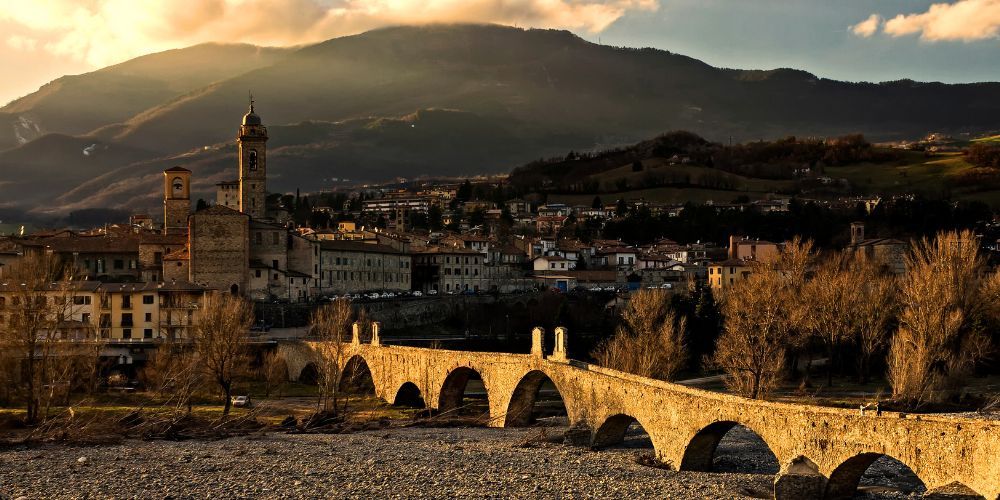
First of all, let's check out the particular geographical position of the village on the map of northern Italy. Bobbio is a small town of around 3000 inhabitants in the province of Piacenza, in Emilia-Romagna. Bathed by the Trebbia river and immersed in the flat valleys on the slopes of the northern Apennines towards the Po Valley, not far from the territories of Lombardy, Liguria and Piedmont, from a geographical point of view Bobbio represents a true crossroads reachable within around two hours of travel starting from the largest northern cities.
How to get to Bobbio from the main Emilian cities?
The village doesn’t have train stations, so the most convenient means of transport to reach Bobbio is by car. In this case, for what concerns Emilia Romagna, the best option is certainly the A1 highway which linearly connects Bologna, Modena, Reggio Emilia, Parma and finally Piacenza; from here just proceed on the SS 45 to your destination. Alternatively, moving by public transport you must first reach Piacenza by train and, once there, go on up to Bobbio by bus.
Book now your guided tour in the historic centre of BolognaHow to get to Bobbio from Milan
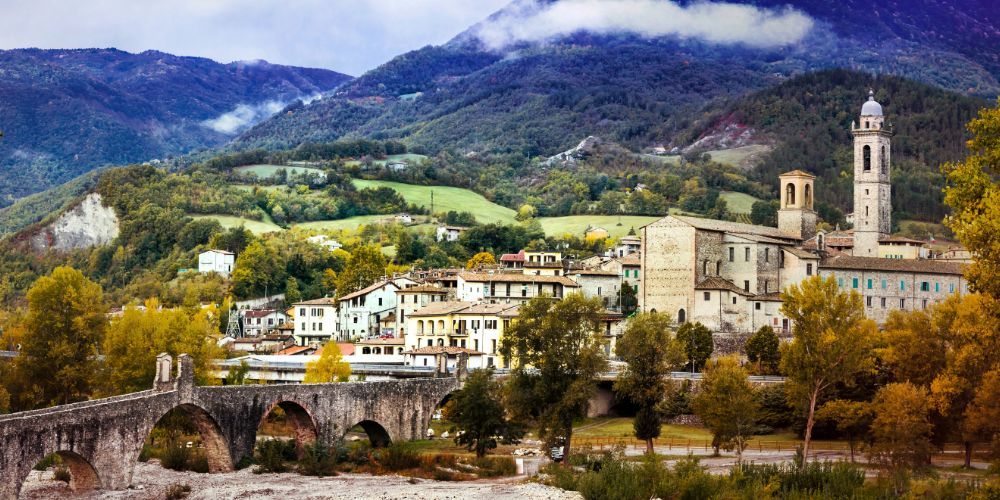
Given its interesting geographical position, Bobbio is often chosen by those who live in the main northern cities as the ideal destination for arranging fantastic one-day trips. Among these, obviously, Milan cannot be missing.
Starting from the so called città meneghina you can reach Bobbio by car taking the A1 highway to Piacenza and then continuing on the SS 45 to your destination; or by public transport, first reaching Piacenza by train and then taking a bus to your destination.
Book now your Milan City PassHow to get to Bobbio from Genoa
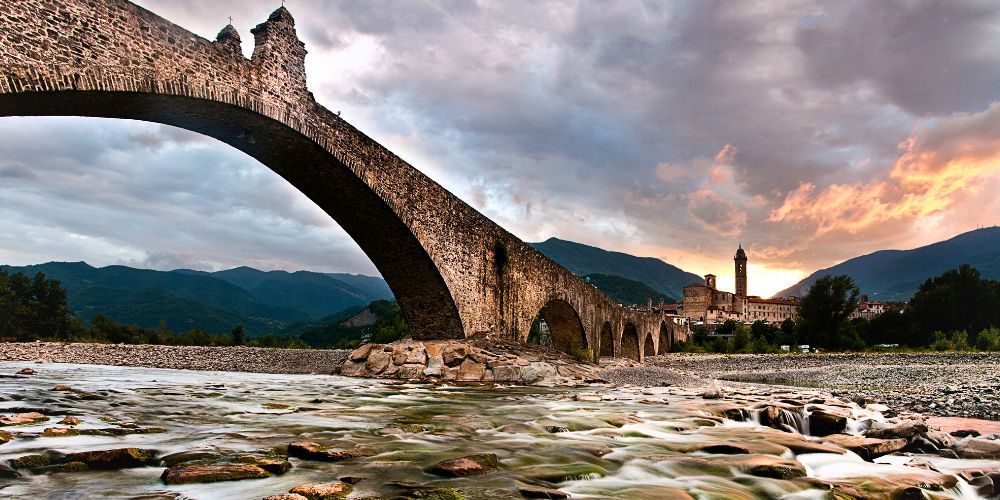
Beyond Milan, and in general the entire southern area of Lombardy, Bobbio is an accessible destination also starting from Genoa and eastern Liguria.
The most convenient means of transport to travel from La Superba to the town of San Colombano is certainly by car; in fact, it is sufficient to take the SS 45 (eastern area of Genoa), traveling towards Piacenza, to reach the iconic village on Trebbia.
Book now your Genoa City PassWhat to see in Bobbio: the best attractions to visit in the village
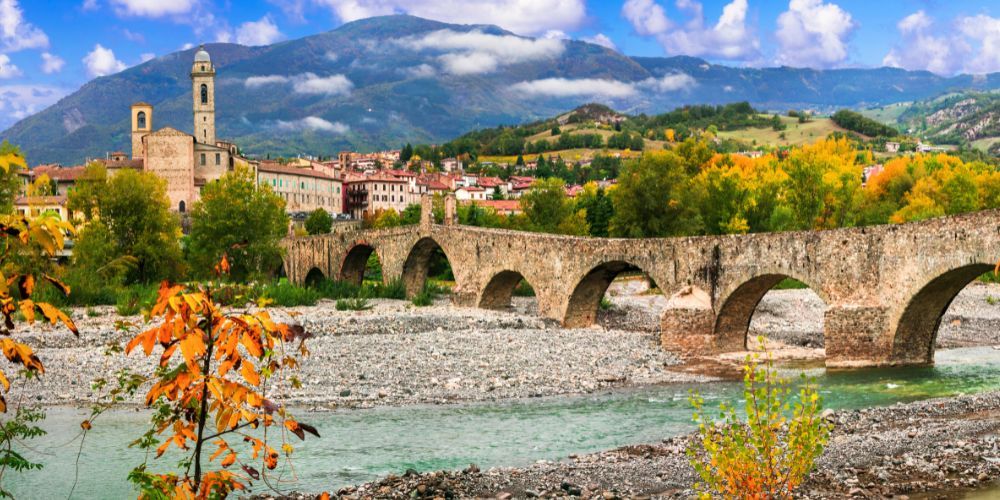
The village of Bobbio is a place rich in history, charm and culture that has much to give to those who decide to undertake this real journey back in time. The first, unique stage among the things to see in Bobbio is certainly its symbolic monument, the Ponte Gobbo (also Ponte Vecchio). It is a construction probably of Roman origin, or any case prior to the arrival of Colombano and the subsequent development of the town, which is characterized by its curious irregular shape; according to legend, in fact, this bridge was built by the Devil himself, almost a gesture of defiance in view of the arrival of the Irish saint and his work of religious and cultural diffusion. Simple folklore or not, the bridge allows you to easily cross the Trebbia river and reach the gates of the town, a mandatory stage to finally enter the historic centre of Bobbio.
Inside the village we continue our tour by immediately visiting the main attraction, the Abbey of St. Colombano. The original building, dating back to 614, was built by Colombano around an ancient church dedicated to S. Peter, while the current building, dating back to 1500s, fully represents the period of transition between the Gothic style of the late Middle Ages and the more elegant and regular one of the Renaissance. The central nave was made by Bernardino Lanzani from San Colombano al Lambro. In addition to conserving the crypt of St. Colombano, today the Monastery houses the City Museum and the Abbey Museum, two unique places to retrace the life of the saint in detail through the many rich historical finds testifying his work.
Another unmissable stage in Piazza del Duomo is the Cathedral of Santa Maria Assunta, also known as the Duomo of Bobbio. Consecrated in 1075, and built in Romanesque style, this imposing church preserves on its inside a beautiful fresco of the Annunciation, dating back to around 1400s. Among the other churches to admire in Bobbio we remember the C. of S. Lorenzo, the Monastery of S. Francesco and the C. of S. Pietro di Dezza.
For tourists more interested in the art, architecture and above all the history of Bobbio, we also recommend to continue the journey discovering the village by visiting the evocative historic buildings that dot the entire town centre, among which the Malaspina-Dal Verme Castle stands out for its majesty and its dominant position in the highest district.
In a village with such an impactful historical charm, it is also a must to wander around its paved alleys in search of sensations and atmospheres of a distant past; an emotion that becomes even more intense by taking the ancient medieval path to the Sanctuary of Monte Penice, a hiking route which starts from Bobbio e rises up to the highest and most famous peak in the area.
What to see in Bobbio: tips to best visit this jewel
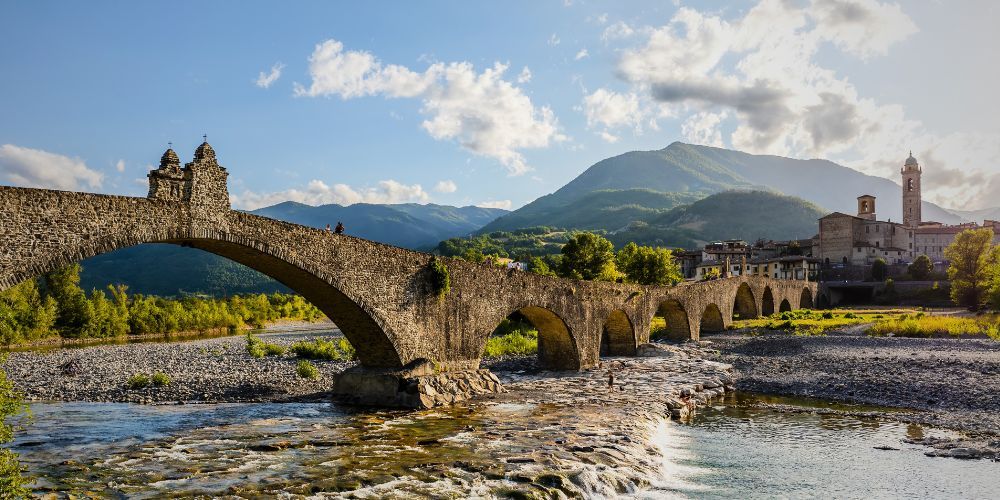
When is it best to visit Bobbio? An interesting question to answer, since depending on the season the village can be a very interesting destination for a varied audience of tourists, with different passions, interests and needs.
In winter we recommend all winter sports enthusiasts to visit Bobbio in the coldest months of the year, enjoying the beauty of the village in its Christmas atmosphere, or perhaps cloaked in snow, before reaching the nearby ski area of Monte Penice (1460m), one of the highest mountains in the Ligurian Apennines chain. Here there is a ski slope, a snowpark and a few kilometers away, in the Ceci Le Vallette area, a cross-country skiing track. The artificial snow guarantees slopes that are always ready for skiing enthusiasts.
In spring and summer, instead, we suggest all hiking and mountain bike enthusiasts to take a trip to Bobbio. In the warmest months of the year there are many routes which, crossing the Trebbia Valley near the village, offer hikers fantastic opportunities to admire breathtaking landscapes between the greenery of the Apennines and the magnificent beaches of Trebbia, immersing themselves in the particular nature of this territory hanging between plain and mountain, but characterized by an almost maritime atmosphere due to its proximity to Liguria. Furthermore, don't miss some of the town's most evocative summer events such as the Bobbio Film Festival and Irlanda in Musica.
And speaking of Ireland, a country strongly related to Bobbio, if you intend to visit it in autumn prepare to experience extraordinary hikes along the banks of the Trebbia river and the hilly paths towards the Penice, admiring the natural masterpiece of the foliage, ending with a bang at the evocative festival dedicated to St. Colombano which is held every year on November 23.
About the author
Written on 22/05/2024



Andrea Biffara
Discover Bobbio with us, an enchanting medieval village in Emilia Romagna perfect for your one-day trips starting from the largest northern cities!